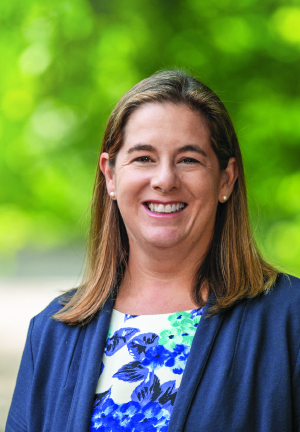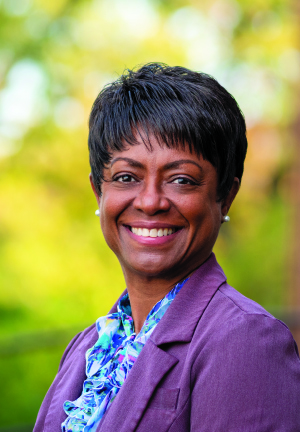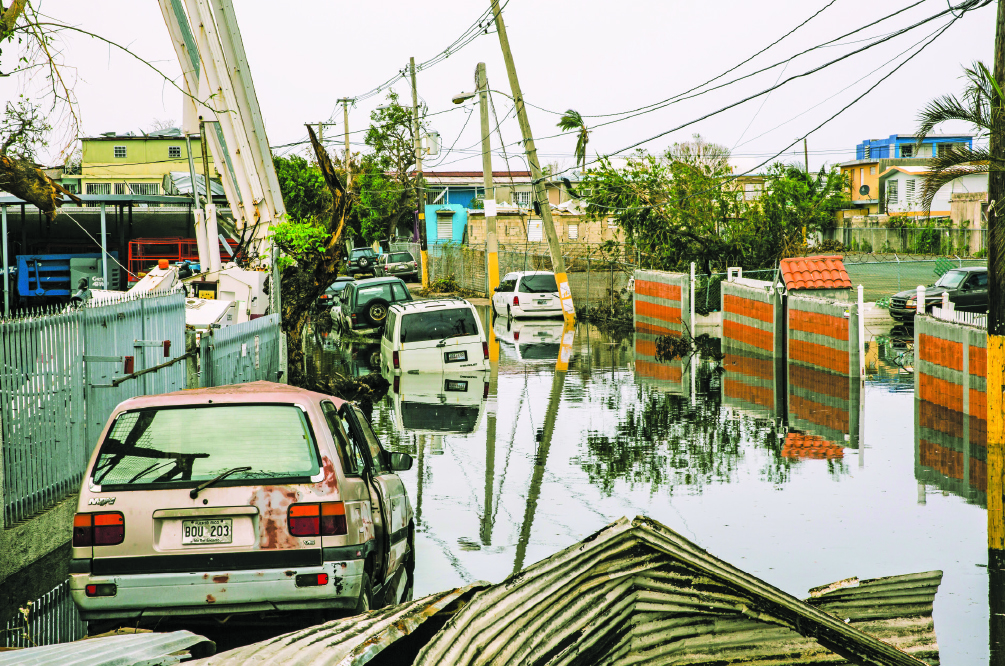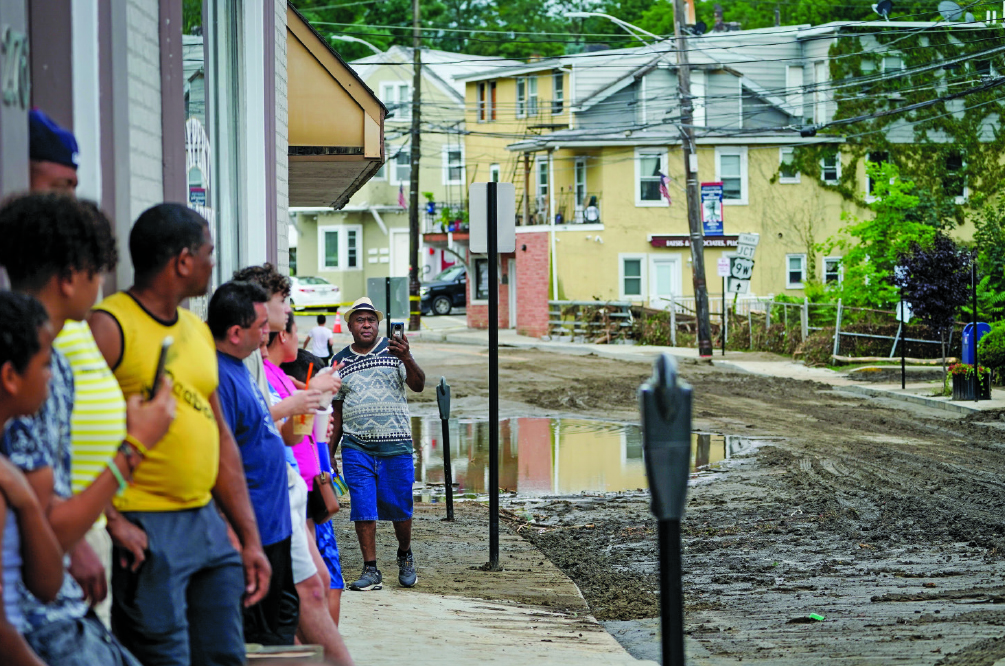Exploring environmental equity and impacts on human health

By Julie Carle
Environmental health experts at the University of Michigan School of Public Health are immersed in understanding the connection between the health of individuals and communities and the environment—whether it’s the air we breathe, water we drink, food we eat, products we use or places we live and work.
Evolving to meet the challenge
Ever since the first course in sanitation and industrial health was introduced in 1882, the University of Michigan has recognized the importance of the external environment and stayed focused on the health needs of our society even as environmental issues have become more complex.
“In recent years, we’ve begun to realize the cumulative impact of the environment on our health,” said Dana Dolinoy, NSF International Chair of Environmental Health Sciences and professor of Environmental Health Sciences and Nutritional Sciences.

Add in a focus on the combined impacts of social and economic exposures to health inequities, environmental justice and equity, and a community-centric foundation, and you get a glimpse of the current and future scope of Environmental Health Sciences and the interdisciplinary work happening at Michigan Public Health.
As times and technology have changed over the past century, the University of Michigan and the School of Public Health have evolved to meet the changing demands. Fifteen years ago, the National Institute of Environmental Health Sciences (NIEHS), a branch of the National Institutes of Health (NIH) that conducts and funds research, focused specifically on toxicants, chemical exposures and direct pollution.
“Lifestyle choices like direct smoking or diet didn’t count,” Dolinoy said. “Over the past 15 years, we’ve made pivotal leaps in recognizing cumulative exposures and the potential protective effects of a good diet and social networks. But we also understand that poor diets, poor sleep or generational stress associated with racism can also impact our health.”
The department’s integrated approach today addresses emerging challenges that affect communities and individuals. They cut across traditional disciplines and draw on the collaboration of its deep domain expertise in toxicology, exposure science and environmental epidemiology, Dolinoy said.
Our students are equipped with tangible skills and tools in innovative methods and approaches to be leaders in tackling current and emerging environmental threats on health.”
— Simone Charles
As equity, risks and climate change pose environmental health challenges, researchers delve into understanding the intricate relationship between our environment and health, and toxicologists are at the forefront of innovative investigations.

They are conducting “cutting-edge work to identify the cause of how the environment gets under our skin. They are thinking about preventive ways to reverse the negative impacts at the biological level through genome or epigenome editing,” Dolinoy said.
“We study things like pollution or what people eat or what we put in our bodies and how that can contribute to diseases like breast cancer or Alzheimer’s disease,” said Justin Colacino, associate professor of Environmental Health Sciences and Nutritional Sciences. The work is an intersection between toxicology and epidemiology.
“We try to understand what the relevant exposures in the human population are, and then we take those back to the lab to do experiments to really understand how those exposures might impact these diseases, the molecular mechanisms that might be involved to give us some ideas about ways to prevent disease in the future, or to implement regulations to prevent some toxic exposures in communities.”
Public health responses to emerging environmental health challenges such as climate change and cumulative risks include climate and environmental justice, disaster response and emergency preparedness, infectious disease prevention, and One Health, among others. As an ever-evolving field, there are new tools, methods and emerging challenges.
“An important aspect of our work is the training of the next generation of environmental health practitioners and researchers to confidently lead in addressing these challenges,” said Simone Charles, clinical associate professor of Environmental Health Sciences. “We seek to recruit and train a diverse cadre of students, including those underrepresented in Environmental Health Sciences.
“Our students are equipped with tangible skills and tools in innovative methods and approaches to be leaders in tackling current and emerging environmental threats on health. Students can engage with dedicated, inspiring faculty at the forefront of their fields to address national and global health challenges through upstream and downstream strategies—in the lab and/or in collaboration with communities to advance health equity.”

Redefining environmental health
A major focus across the disciplines is on health equity and how disproportionate exposures in individuals and communities might be promoting increased disease risks in the communities, Colacino said.
During the evolving landscape of environmental health research, the traditional approach to evaluating risks—one exposure at a time—has given way to innovative methodologies that recognize the intricate interplay of exposures in shaping health outcomes.
According to Dolinoy, regulatory limits were set without thinking about that exposure in context of everything else.
“New forms of evaluation called cumulative risk evaluation and precision environmental health are poised to make an impact that’s revolutionizing the way we will regulate environmental exposures in the future,” she said.
Though even with the new tools, change is difficult.
“A lot of the chemicals are really important for economics for different companies, so you have to be willing to think about the trade-offs and also to innovate to other sectors,” Dolinoy said. “There’s going to be some tug and pull as we begin to recommend changes.”
“Exposure science feeds into environmental epidemiology, which links these exposures to an ever-widening range of diseases,” said Stuart Batterman, professor of Environmental Health Sciences, Global Public Health, and Civil and Environmental Engineering. “We are now linking environmental exposures to brain health, including Alzheimer’s and ALS.”
A critical lens in the realm of environmental health research unveils the profound influence of historical redlining practices and present-day residential segregation, particularly within communities predominantly composed of Black and Brown individuals, where ongoing projects illuminate the dire effects of industrialization’s aftermath and environmental disregard.
Exposure science feeds into environmental epidemiology, which links these exposures to an ever-widening range of diseases. We are now linking environmental exposures to brain health, including Alzheimer’s and ALS.”
— Stuart Batterman
Many of Batterman’s projects are focused on communities that are hard hit, suffering from a legacy of industrialization and neglect of the environment. In Michigan, areas such as southwest Detroit and Flint are impacted, but workers and residents in other states and countries endure exposure to toxic chemicals, infectious agents, heat, noise and other environmental stresses, he said.
“They are often exposed to lead-based paint and water pipes in older homes, close to noxious land uses such as hazardous waste facilities, industries that release air or water pollutants, or roadways with heavy truck traffic,” said Amy Schulz, University Diversity and Social Transformation Professor and a professor of Health Behavior and Health Education at Michigan Public Health.
Her research has contributed to the body of evidence establishing that racialized communities are more likely to experience multiple environmental exposures and to have fewer economic and political resources with which to address those exposures when they do occur. Together, these factors contribute to racial and ethnic inequities in health outcomes.

Health equity
For example, Deborah Watkins, associate professor of Environmental Health Sciences at Michigan Public Health, is part of an ongoing birth cohort study in Puerto Rico that began before Hurricanes Irma and Maria hit in September 2017.
In the study, funded by NIEHS, they are researching the impacts of environmental contamination on preterm birth and other adverse birth outcomes in Puerto Rico. After the hurricanes, they first ensured the safety of the research team and provided water filters and supplies to the participants and community partners.
They then evaluated the hurricanes’ impact on environmental exposures, mental health and birth outcomes among the participants, she said.
Preliminary findings suggest that more disadvantaged participants were more likely to be lost to follow-up in the aftermath of Hurricane Maria, “highlighting the critical need to get necessary care to less-resourced pregnant people before, during and after extreme weather events,” Watkins said.
We are building our understanding of the processes that support partnership development and build the capacity of researchers and community-based organizations to work together to generate solutions to the critical public health challenges of our time—of which climate change and climate justice are among the most important.”
— Amy Schulz
Additionally, the department was already working in Flint on the “vicious cycle of substance abuse” before the water crisis became a public realization, Dolinoy said. Because they had established connections, the department was able to easily step in to lend its environmental health lens to the community.
“It is really important to have your ears and arms open and to listen when doing this type of work,” she said.
“We are building our understanding of the processes that support partnership development and build the capacity of researchers and community-based organizations to work together to generate solutions to the critical public health challenges of our time—of which climate change and climate justice are among the most important,” Schulz said.

Environmental justice
Community science is valuable to the public health discourse and environmental health equity. Environmental Health Sciences faculty also work with communities to promote environmental health literacy and research translation for addressing environmental health disparities and advance environmental justice. Helping young community members understand and deal with environmental justice issues together, to improve their knowledge and skills in environmental health is one of Charles’ areas of practice. To this end, she serves as multiple principal investigator of a summer research experience for underrepresented students in Environmental Health Sciences.
“Environmental Health Sciences will continue to play a pivotal role in advancing population health and health equity,” said Charles, who has worked with adolescents in Flint, Detroit and Clinch County, Georgia.
In an increasingly warming world, the burden of climate change disproportionately falls upon marginalized and economically disadvantaged groups, as underscored by the heightened health vulnerabilities stemming from intensified heat stress and environmental challenges such as air pollution and extreme weather events.
The summer’s high air pollution levels from Canadian wildfires’ smoke, extreme heat in the South and intense flooding in the East demonstrated the ramifications of climate change.
Batterman’s team was involved in continuously monitoring the unprecedented levels of airborne microscopic particles from the wildfires and recommending several actions to reduce exposure.
“The community, information and technology concerned with this topic is growing,” he said. “No one has a crystal ball, but environmental shocks like flooding and wildfire smoke, which lead to all sorts of public health impacts—both directly and indirectly—will intensify if we don’t address climate change.
“Environmental stresses are a modifiable determinant of health. We can take many actions to reduce exposure. Some steps are relatively easy, but others, like climate change, require coordinating actions across many actors, time and geographic scales.”
The experts at Michigan Public Health are a vital part of that equation, working to protect people while improving the health of our planet.
No one has a crystal ball, but environmental shocks like flooding and wildfire smoke, which lead to all sorts of public health impacts—both directly and indirectly—will intensify if we don’t address climate change.”
— Stuart Batterman
- Interested in public health? Learn more here.
- Read 'Changing the world because of my science' in this issue of Findings.
- Read how a Toxicology doctoral student feels compelled to help others in this issue of Findings.
- Also in this issue of Findings: Exposure Research Lab helps informal e-waste recyclers and communities in other countries.
- Support research and engaged learning at the School of Public Health.
